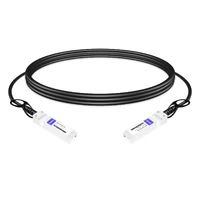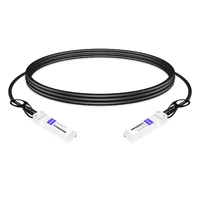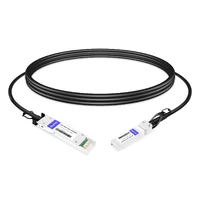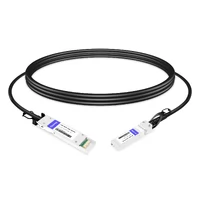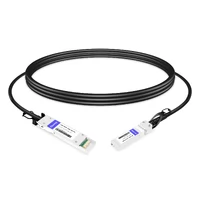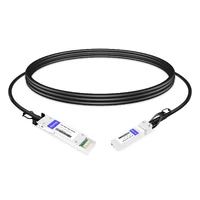Efficient and high-speed data transmission is important in current-day networking scenarios. The SFP+ Direct Attach Cable (DAC) is one of the main enablers. The SFP+ DAC is a well-known, cheap, and dependable solution for connecting servers, switches, and storage devices over short distances. These cables are terminated with an SFP+ connector at each end, which means they can be plugged directly into the ports without using other modules or transceivers. In this post, we will discuss the Technical Specifications, Advantages, and Applications of SFP+ Direct Attach Cables so that you can have a good knowledge of why it is necessary in modern network infrastructure today.
Table of Contents
ToggleWhat is an SFP+ Direct Attach Cable?
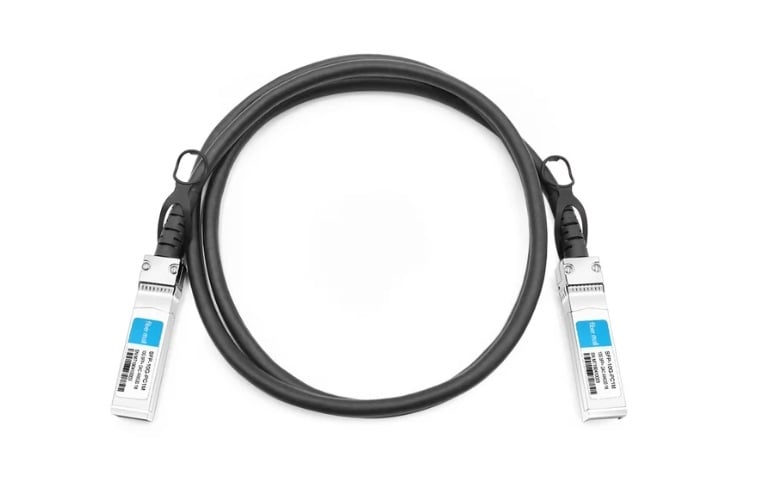
Understanding Direct Attach Cables
The Direct Attach Cable (DAC) is a high-speed cable that connects data center equipment. This allows them to communicate and share information. Usually, they are twin axial cables designed to be strong and durable for use over short distances, typically up to 10 meters. DACs have connectors resembling transceivers at the factory end, which can be directly plugged into SFP+ (Small Form-factor Pluggable Enhanced) ports without the need for any more optical transceivers. Consequently, this makes them cheap as well as easy to install where there is a need for large amounts of bandwidth, i.e., connecting servers, switches, and storage arrays in a rack together.
Types of SFP+ Cables
Broadly speaking, there are two main categories of SFP+ Direct Attach Cables: active and passive.
To begin with, passive SFP+ DACs are less complex and cheaper since they don’t need any power to operate. Normally, these cables cover short distances which are usually no more than 7 meters; hence they are perfect for linking within one rack or between adjacent racks.
On the other hand, active SFP+ DACs have an electronic component that maintains signal integrity and supports longer cable lengths typically up to 10 meters. This means that the active circuitry compensates for signal degradation over distance thus making them ideal for applications where a little more reach is required without compromising on performance.
Once these types are known, network engineers can select appropriate SFP+ DACs considering their specific distance as well as performance requirements.
Copper vs. Optical Cables
For data centers, there are various things that need to be thought of before making a decision between copper cables and optical fibers, these include; distance, bandwidth requirements, cost implications as well as environmental conditions among others.
Copper Cables (such as DACs) are more affordable when used for short distances not exceeding 10 meters. They have enough bandwidth to cater for most connections within a rack or between adjacent racks, and they are easy to install because they can bend easily due to their flexibility and resilience. On the other hand, copper cables are susceptible to electromagnetic interference (EMI), which may corrupt signals in places with high levels of interferences.
Optical Cables, on the other hand, can cover longer distances, sometimes even over 100 meters, due to their ability to transmit data at very high speeds besides being resistant to EMI. They support higher bandwidths and are hence suitable for use in networks where large volumes of information are exchanged frequently across wide areas. These cables have smaller diameters compared with copper ones, thus saving space, but this makes them delicate, so extra care must be taken during handling and installation, though generally costlier.
Each type has its own benefits therefore it is important for one to know what each entails vis-à-vis data centers requirements.The decision will mainly depend with some factors like how far apart devices should be connected; what level of performance is desired among others while considering budget constraints too.
How Does a 10G DAC Work?
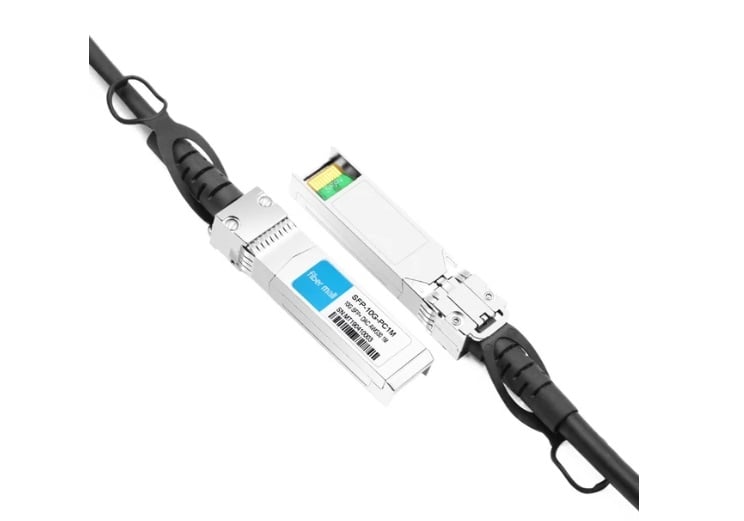
10Gbps Transmission Explained
10 gigabits per second (10Gbps) transmission is a way of transmitting data at incredibly fast rates over different types of media. It works by transforming information into light or electrical signals and then sending them down optical fiber or copper cables. For long distances, single-mode optical fibers are often used because they have low attenuation and can resist electromagnetic interference. On the other hand, shorter distances can be covered with copper cables like Direct Attach Copper (DAC) cables, which are cheaper and easier to install.
Electrical signals are transformed into optical signals using a laser in the case of optical fibers, or they may continue as electrical signals in copper cables, after which they are sent through the medium. At the receiving end, an optical system uses a photodetector to convert these light pulses back into electric ones. This high-speed data transfer is managed by various protocol standards such as Synchronous Optical Networking (SONET) and Ethernet, ensuring no significant loss or delay in integrity.
IEEE 802.3ae-2002 specification standardizes 10 gigabits per second Ethernet technology for inter-device and infrastructure operability. To increase reliability and efficiency during transmission, Forward Error Correction (FEC) mechanisms are employed alongside advanced modulation methods like Pulse-Amplitude Modulation (PAM). Therefore this makes it possible for communication networks to handle large quantities of information quickly without losing any data.
The Role of Passive and Active DAC
There are two main types of Direct Attach Copper (DAC) cables: active and passive. Passive DACs do not contain any electronic parts that amplify signal strength; instead, they rely on the natural properties of copper cables. Though this results in lower consumption of power, their transmission distance is limited to about 7 meters because the signals weaken.
Conversely, active DACs have electronic components which boost signals continuously over longer distances without losing much data integrity – typically up to 15m. Even though active DAC consumes more energy than passive ones do, it provides better performance and reliability thereby being suitable for high-density data centers where they are needed to run cables for longer periods.
All these two kinds of DAC cable are important for network solutions as they offer cheap yet dependable connections required for high-speed data transfers. However, whether to use an active or passive DAC will depend on specific network infrastructure needs with regard to distance, power usage and performance.
Cable Lengths: 1m vs. 3m
In terms of performance, practicality and cost, there are a number of factors to consider when choosing between 1m and 3m Direct Attach Copper (DAC) cables.
- Performance: Signal integrity is slightly better on shorter cables like 1m DACs because there is less resistance i.e., latency decreases as potential for signal degradation falls. Therefore these types of wires are most ideal for use in dense installations such as server racks.
- Practicality: Another thing that should be taken into account while making this decision is how the network has been physically set up. In case one rack needs to be connected with another or wider spaces within a data center need to be covered, then it would require at least three meters long cable unlike where just within single cabinets needs connection which can only take one meter cable hence reducing unnecessary wire mess.
- Cost: Comparatively speaking, 1m DAC cables are cheaper than their 3m counterparts mainly because they have less materials used during manufacturing process among others things but still it is worth noting that these savings should not outweigh the benefits associated with having longer runs of wires.
To sum up my argument, I would say that for near connections where space saving and low latency are critical considerations then one meter direct attaching copper cord will work best while in situations which demand flexibility over distance coverage across structured cabling environment within data centers three meters long ones would be more appropriate .
Why Choose Direct Attach Copper?
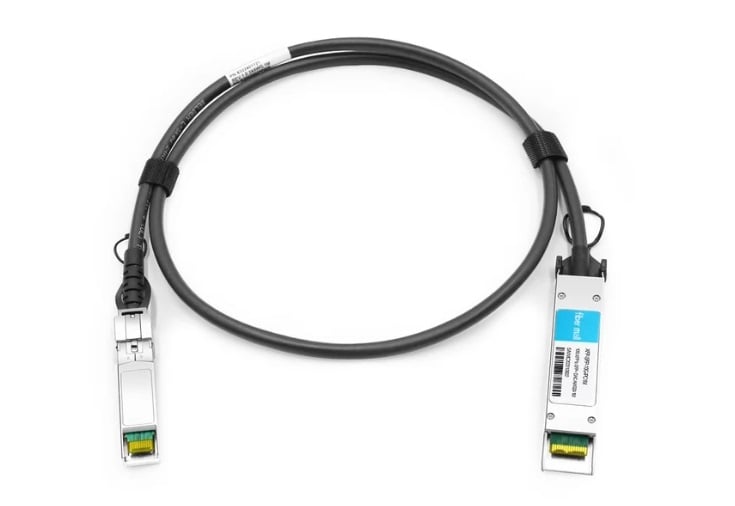
Cost-Efficiency of Copper Cables
The main reason why Direct Attach Copper (DAC) cables are considered more cost-effective than optical fibers is due to their lower material and manufacturing costs. Top sources say DAC cables are much cheaper as they don’t need expensive transceivers like those required by fiber optic cables. Additionally, the ease of installation, plus not requiring any extra power or conversion equipment, lowers overall deployment expenses. This makes them ideal for connecting data centers over short distances where performance needs to be high, but budgets are tight, and efficiency is important, according to most top sources.
Performance Benefits of Direct Attach Copper
There are many advantages of using direct attached copper (DAC) cables for connecting data centers. First, they have low latency and high bandwidth. Both of these features are very important in supercomputing centers where efficient and fast transfer of information is required. Second, DAC cables are reliable and resilient, with a low Bit Error Rate (BER) even in harsh conditions. This reduces the chances for a connection error or failure to occur during data transmission processes. Additionally, they are considered to be among the most power-saving options available because their power consumption is much lower when compared with active optical cables. Thus, such reduced use of electricity results in decreased costs for operations as well as a smaller carbon footprint, which aligns with eco-friendly requirements imposed by contemporary data centers worldwide. In general, DAC wires offer superior performance due to their combination of qualities like limited delay time, large capacity, dependability, and conservation of energy while networking over short distances within DCs.
Simplicity of Direct Attach Copper Twinax Cable
Other interconnection technologies are not as simple as Direct Attach Copper (DAC) Twinax cables. The ease of this simplicity is due to the fact that these cords can be inserted directly without any configuration needed. Unlike fiber optic solutions that need precise alignment plus other devices like transceivers, DAC twinax cables don’t require complicated installation procedures because they can just be plugged in easily, even by a non-expert user, which minimizes deployment time and maintenance for data centers.
Moreover, onsite terminations together with specialized tools are unnecessary since connectors come already attached to pre-terminated DAC Twinax cables, thus making installations faster while ensuring uniformity in performance levels and quality standards at the same time. Additionally, no extra power sources or media converters are needed for DAC twinax cables because they don’t increase overall system complexity; hence, they are more friendly to users. Being physically simple and easy to integrate into existing infrastructures, these types of cords make an ideal choice for efficient operations within data centers as they save much time and effort.
What Should You Look for When Buying SFP+ Cables?
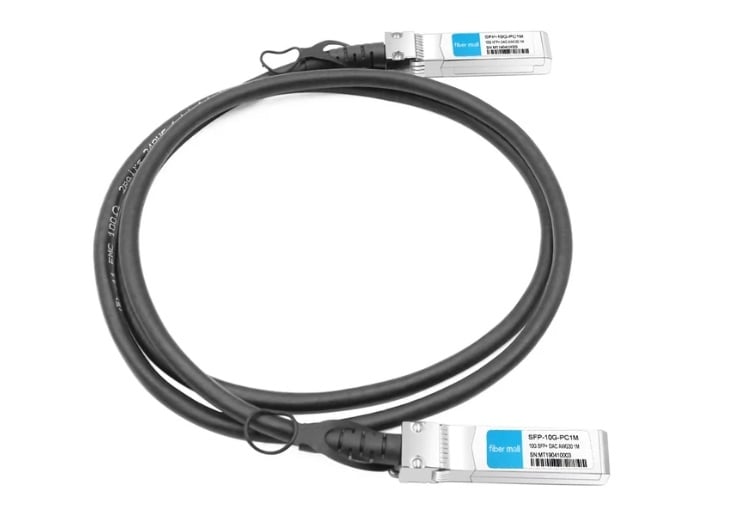
Shopping by Brand: Cisco, Aruba, Fibermall
When looking to buy SFP+ cables, it is important to think about the brand name and how well-established it is in the industry. Below are brief descriptions of three popular brands:
- Cisco: Cisco is known for producing top-of-the-line networking equipment. They have a variety of SFP+ cables available that are high-quality and guaranteed to work with any device within this category. The compatibility among different products ensures seamless integration into any network environment while maximizing performance levels attained thereof. Additionally, they offer customer support services coupled with warranty options thus becoming a reliable choice for operators managing data centers.
- Aruba: Aruba Networks, an HPE company, specializes in providing modern enterprise-focused wireless LAN solutions, which include but are not limited to routers, switches, etc. These devices enable them to deliver tailored networking solutions designed specifically for enterprises operating today where mobility has become a key factor driving productivity improvements across organizations’ workforce, hence creating the need for secure unified access to all types of media from wired, wireless, remote branches, headquarters campuses, among others. Among its features such as these ones mentioned earlier, Aruba high-density environment robustly built sfp plus cables stand out due to their ability to perform exceptionally well under heavy loads or when deployed in large numbers in close proximity to each other like classrooms, hospitals, stadiums, shopping malls, airports, railway stations, hotels etc.Their connection speed can be very fast thus making them suitable even.
- Fiber Mall: FiberMall provides inexpensive yet high-quality optic fiber communication products, including transceivers and cables. Their SFP+ cable series comes at an affordable price range and meets industry standards, ensuring compatibility across different manufacturers’ network devices. Moreover, FiberMall employs stringent quality control measures during production; this guarantees customers durability without having to pay exorbitant amounts of money, unlike other similar offerings present in the market today. Additionally, they have various quantitative ordering methods as well as allowing buyers to customize according to their specific requirements, thus being a more appealing option for those who want to save some cash while setting up data centres.
While buying these brands’ SFP plus cables, you should consider factors such as compatibility with other devices; performance considering your network infrastructure; cost depending on budget allocated for purchasing equipment required in data centre; level of support needed from vendor inclusive warranties available.
Features to Look For: 10G, Passive, Active
When you opt for SFP+ cables in your data center, it’s important to understand the features of 10G, passive and active cables:
Ten Gigabit SFP+ Cables: These cables are structured to support data transfer speeds of up to ten gigabits per second which makes them applicable in high-performance networking environments. They work best where there is need for fast and dependable data transmission such as server farms, enterprise networks or data centers.
Passive SFP+ Cables: Passive cables don’t have any internal electronics that amplify signal strength. In order to maintain signal integrity, they entirely rely on connected devices which consequently makes them cheaper over short distances (usually less than seven meters). Their simplicity is characterized by low power consumption and this helps cut down costs during installation process besides saving energy thus reducing overall operating expenses.
Active SFP + Cables: Unlike passive ones, active sfp+ cable contain inner electronic components which condition signals ensuring their integrity is maintained even when transmitted over longer lengths (up to fifteen meters or beyond). Such types of wires are very useful in situations where maintaining signa strength along extended distances remains a challenge.However though being costlier than passive variants ; still more reliable due enhanced functionality while providing better performance hence justifying additional investment made towards them respectively.
Once these main characteristics have been taken into account one can be able to choose the right type of SFP Plus Cable for use within their specific environment thereby achieving maximum efficiency as well as reliability at all times throughout its operation.
Understanding Product Descriptions and Compatibility
When it comes to picking SFP+ cables, you should read the product description to make sure it will work with your network. Commonly, they include cable type (active or passive), data transfer rate (such as 10G), cable length and compatibility with switches, routers or servers.
You can find the right SFP+ cables for your data center’s performance and reliability needs by comparing product descriptions from different manufacturers and checking if they’re compatible with your network devices.
How to Install and Test Your SFP+ Direct Attach Copper Cable
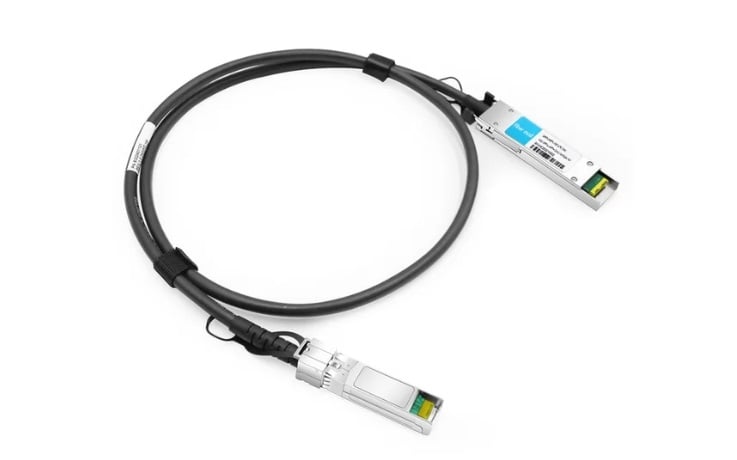
Step-by-Step Installation Guide
- Prepare the Environment: Clean your workspace and remove all static electricity. Ensure that you have all necessary tools at hand, such as an electrostatic discharge (ESD) wrist strap, cleaning wipes, or proper lighting.
- Check for Compatibility: Make sure the SFP+ Direct Attach Copper Cable will work with your network devices like switches, routers, or servers before installing it. Check the product documentation and network device specifications.
- Turn Off Power on Devices: Shut down every single network device where SFP+ DAC cable installation is supposed to take place as a safety measure against electric shock and damage.
- Take off Dust Caps: Remove protective dust caps from both connectors of an SFP+ DAC cable as well as its corresponding port on each networking equipment.
- Connect Cables: Insert one side of an SFP+ DAC cable into the first device’s respective port then push until it clicks securely into position – repeat this process using second end within another machine.
- Secure Cables: Use cable management clips or ties for tidying up DAC cables so they cannot be accidentally unplugged while also enhancing airflow around them.
- Power On Devices again : Switch on network devices and wait for them to finish booting. Observe their startup sequences closely; verify if these units detect newly fitted SFP+ DAC cables during self-diagnostics tests displayed on LEDs of corresponding ports.
- Check Connections: After powering up the devices make sure that everything is connected properly by checking whether there are any indicator lights showing active status (signifying successful completion).
- Conduct Network Tests: Perform routine diagnostic testing regarding integrity checks together with good performance across networks; iPerf tool may be employed among other available network benchmarking software applications.
- Document Installation: Write down details about what was done where including types, lengths of cables used etc., so that in future you can refer back to this information during troubleshooting exercises.
By following these instructions step by step one shall ensure that they have correctly installed their SFP+ Direct Attach Copper Cable thereby enhancing the performance and lifespan of their data center network.
Ensuring Proper Connector Alignment
In network installations, proper connector alignment is important for good signal quality and low losses. Here are a few things to consider:
- Check Connectors: Examine connectors visually for cleanliness or damage before you plug them in. Use cleaning tools that are made for connectors in case they need to be cleaned.
- Orientation of Connector: Watch out for the way that connectors are lined up with each other. Most ports have a notch or some other type of keying feature that ensures only one kind of connector can be inserted into them. Make sure these features line up so as not to damage any connected hardware.
- Make Connections Secure: Push down on the tab until you hear it click when inserting a cable into an ethernet port, or vice versa; this will let you know if your connection is secure or not. Do not use too much force which may bend pins and break the tab off.
- Guides: Use connector alignment tools and/or guides whenever possible but especially when working in tight spaces where multiple connections need to be made.
By paying careful attention to each point listed above, one can ensure that their network stays reliable throughout its lifetime by avoiding problems caused by loose connections.
Testing and Verifying Connectivity
To make sure that a network runs efficiently and without disruptions, it is important to test and verify connectivity. Below are some steps of how to go about this:
- Visual examination: Before anything else, visually inspect all the connections so as to confirm whether the cables are properly seated and there are no visible signs of damage or wear.
- Employ network testing tools: These may include but not limited to cable testers, Multimeters or Optical Time-Domain Reflectometers (OTDRs) which can be used for identifying physical layer problems within a network. For example they help in continuity test, signal strength test as well as cable quality verification.
- Check link status LEDs: Most network equipments have got LEDs that show link statuses. Ensure that these LED lights are correctly illuminated implying live and correct connection. It can therefore tell instantly if the connection is active or not working properly.
- Ping testing: It is possible to verify device-to-device reachability by executing ping tests from command line interface. When you ping an IP address which is known, then packets will be transmitted and received successfully if only they traverse through a path where there is no interruption.
- Bandwidth testing: Use network performance tools for measuring bandwidth along with latency amid two points in the networking system so as to highlight any data transmission rate irregularities or performance bottlenecks.
Following these steps in an organized manner will help ensure strong dependable network links able to support required loads while promptly fixing discovered problems maintains uptime and enhances performance of networks.
Reference sources
- Cisco
- Technical Documentation: “Cisco 10GBASE SFP+ Modules”
- URL: Cisco
- Summary: The following Cisco technical documentation gives specific details and uses about different SFP+ modules which includes Direct Attach Cables (DACs) by highlighting their performance, compatibility and use in transmitting high-speed data.
- FS.com
- Knowledge Base: “Introduction to SFP+ Direct Attach Cables”
- URL: FS.com
- Summary:SFP+ Direct Attach Cables are explained in FS.com’s knowledge base, which also lists their types, benefits, and how they differ from other transceivers; it also gives some tips on using them in data centers and enterprise networks.
- Arista Networks
- Technical Guide: “Understanding SFP+ Direct Attach Copper (DAC) Cables”
- URL: Arista Networks
- Summary: The technical guide of Arista Networks offers information about the features and benefits of SFP+ DAC cables. It also suggests some recommendations for implementing them and compares these cables with other types on cost and performance bases.
Frequently Asked Questions (FAQs)
Q: What does an SFP+ Direct Attach Cable refer to?
A: An SFP+ Direct Attach Cable (DAC) is a passive copper cable designed for use within data centers and high-performance computing networks as a short-range communication medium. It has been tested to support data transmission speeds up to 10 Gbps.
Q: How does a DAC Twinax Cable work?
A: A DAC twinax cable transmits data by means of twinax copper conductors. These cables are built for short-distance applications, providing cheap connectivity at 10g rates, which makes them perfect for linking network components such as switches and servers together.
Q: What are the different types of SFP+ Direct Attach Cables?
A: There are two types of SFP+ direct attach cables – passive DAC and active optical direct attach cable. Passive copper direct attach cable doesn’t need power and suits only short distances, while active optical cables use transceivers that require power, allowing longer distances.
Q: Can I use DAC Twinax Cables with other equipment?
A: Yes, DAC twinax cables also provide backward compatibility with various network equipment including switches, servers and transceivers based on SFP standards. For example sfp-10g-01c is a passive copper DAC compatible with some 10 Gbps SFP ports.
Q: How can I shop by category for different kinds of Direct Attach Cables?
A: When you shop by category for Direct Attach Cables you may choose between passive copper direct attach cables (like sfp cables) or active optical direct attach cables. Each category comes with its own features and compatibility thus making it easier to meet specific network requirements.
Q: Can 1Gbps Ethernet be done by DAC Twinax Cables?
A: Yes, but they are made for 10 Gbps Ethernet primarily; however, they can also work with 1 Gbps Ethernet. These cables are adaptable and can support various network speeds.
Q: What are the benefits of Passive DAC?
A: Some advantages of passive DAC include lower cost, less power consumption and reduced latency. They’re perfect for short-range data transmission within racks or between adjacent racks in a data center.
Q: What length options do I have for DAC Twinax Cables?
A: Typically, DAC twinax cables come in different lengths ranging from 0.5m up to 10m. A common example of interconnecting network devices in close proximity is using the standard length which is a 2m twinax cable.
Q: Is it okay to use DAC Twinax Cables with Ubiquiti network devices?
A: It is possible to use DAC twinax cables with Ubiquiti network devices since they are compatible. Just make sure that you buy from Ubiquiti store or other suppliers who have tested and confirmed that the cable can work well with Ubiquiti’s specific SFP ports and transceivers.
Q: What are the dissimilarities between RJ45 and SFP cables?
A: Mostly used in traditional Ethernet networks, RJ45 cables differ from SFP cables designed for higher-speed gigabit and beyond applications. However, when compared with RJ45 connections, SFP cables especially the 10g direct attach cables offer more versatility as well as higher data rates.
Related Products:
-
 SFP-10G-PC1M 1m (3ft) 10G SFP+ to SFP+ Passive Direct Attach Copper Cable
$8.00
SFP-10G-PC1M 1m (3ft) 10G SFP+ to SFP+ Passive Direct Attach Copper Cable
$8.00
-
 SFP-10G-AC1M 1m (3ft) 10G SFP+ to SFP+ Active Direct Attach Copper Cable
$25.00
SFP-10G-AC1M 1m (3ft) 10G SFP+ to SFP+ Active Direct Attach Copper Cable
$25.00
-
 XFP-SFP-10G-PC50CM 50cm (1.6ft) 10G XFP to SFP+ Passive Direct Attach Copper Cable
$50.00
XFP-SFP-10G-PC50CM 50cm (1.6ft) 10G XFP to SFP+ Passive Direct Attach Copper Cable
$50.00
-
 XFP-SFP-10G-PC1M 1m (3ft) 10G XFP to SFP+ Passive Direct Attach Copper Cable
$52.00
XFP-SFP-10G-PC1M 1m (3ft) 10G XFP to SFP+ Passive Direct Attach Copper Cable
$52.00
-
 XFP-SFP-10G-PC2M 2m (7ft) 10G XFP to SFP+ Passive Direct Attach Copper Cable
$55.00
XFP-SFP-10G-PC2M 2m (7ft) 10G XFP to SFP+ Passive Direct Attach Copper Cable
$55.00
-
 XFP-SFP-10G-PC3M 3m (10ft) 10G XFP to SFP+ Passive Direct Attach Copper Cable
$60.00
XFP-SFP-10G-PC3M 3m (10ft) 10G XFP to SFP+ Passive Direct Attach Copper Cable
$60.00

